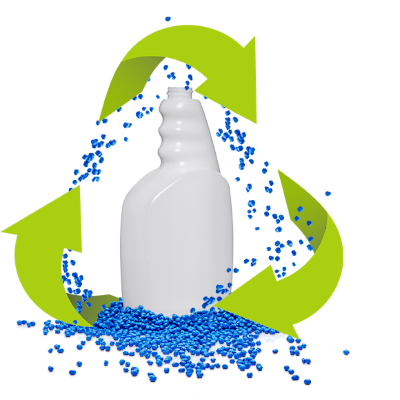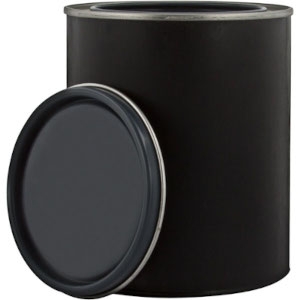What is PCR Packaging?

PCR, short for post-consumer resin (post-consumer recycled), is an environment-friendly packaging option that is made from recycled plastics, most commonly PET and HDPE plastic products. Instead of being sent to a local landfill, used items such as bottles, milk jugs, buckets, and industrial products like IBC totes and polydrums can be broken down, melted and reconstructed to make a resin material that’s then added to create a new product—PCR packaging.
PCR packaging is used to propel a continuous cycle of creating various "new" products with used recycled plastics. In addition, according to the United States Environmental Protection Agency (EPA), post-consumer recycled production reduces the reliance of fossil fuels as well as raw materials for its formulation in comparison to virgin resin products.
Pros of PCR Packaging
- The recycled resin reduces the amount of waste that is landfilled and reduces the use of fossil fuels which, in turn, improves the environmental impact of plastic packaging. PCR packaging appeals to eco-conscious consumers, and, studies suggest that people, particularly generations Gen Z and millennials, are committed to having a positive impact on the environment, indicating PCR plastics are the way of the future.
- PCR allows manufacturers to produce high-quality products like a virgin resin product would at competitive prices while reducing their environmental impact. The grade of PCR plastics is equally matched with regular plastic film in terms of protection, performance, and strength. Post-consumer resin blocks light, oxygen, and other gases from seeping into the package.
- PCR packaging can be suitable for food-contact use if it meets the FDA Guidelines.
- These plastics decrease carbon footprints (the total amount of greenhouse gases produced by our actions).
Cons of PCR Packaging
- The required reheating process in creating PCR plastics can alter the color and clarity of the product depending on the amount of resin that is added. This process does not hinder the function or durability of the bottle. Manufacturers can shy away from using post-consumer resin because the dark properties of the bottle do not fit the aesthetic they want to portray for their packaging.
- Benefits of PCR plastic are dependent on the consumer recycling their products.
- Price of manufacturing is contingent on the amount of plastics recycled.
How Is PCR Used?
After consumers recycle their products, recycling plants sort the bottles according to their plastic type. Because PET and HDPE plastics are most commonly used to manufacture PCR products, these plastics are collected, washed and broken down into resin pellets. The resulting pellets are then reheated, molded and formed into a new product.
PCR can be added in percentages ranging from 10% to 100% along with virgin plastic depending on the manufacturer's preference.
If post-consumer resin is used to manufacture a plastic bottle, a higher percentage can impact transparency and color. Some companies choose to incorporate less PCR in their products and more virgin resin so the material can retain the look of virgin resin. For example, if a product is composed of 25% PCR and 75% virgin resin material, then the product will look more like a virgin bottle. Additionally, many PCR plastic bottles are typically intended for products that do not require transparent packaging.
What is Virgin Resin?
Virgin resin is the term for new and unused plastic resin without any recycled products to generate an original product. Due to its clean appearance and stable nature, virgin resin is heavily used to produce a wide variety of plastic products.
PIR or PCR? Reprocessed vs Recycled

PIR, or post-industrial resin, is reworked plastic produced in the manufacturing process. PIR consists of grinded resins that were collected either from extra scrap parts during the molding stage of production or finished products that did not pass the quality control standards of the original product. Despite never being used before, the material is not considered virgin because it has been put through a second reheating process.
PIR products have not reached the consumer whereas PCR products include used material that's already reached the consumer and returned.
While PIR is reprocessed resin, PCR is made of used and recycled resin. Like PCR packaging, PIR also helps decrease the amount of plastic sent to landfills as well as reduce the demand for raw materials.
Is PCR Packaging Biodegradable?
The term biodegradable is defined as the length of time it takes for plastic to fully break down and degrade by the consumption of living microorganisms such as fungi and bacteria. While PCR is a more environmentally friendly option (in comparison to virgin resin) since it's made from recycled plastic, according to The Federal Trade Commission's Green Guides, the plastic itself is not biodegradable unless it is decomposed within a year of being disposed of in landfills, incinerators and recycling plants.
How Can We Help?
If you wish to explore other eco-friendly packaging alternatives from PCR packaging to glass containers, our packaging experts can assist with finding the best product to meet your requirements. Contact us today to discuss your packaging needs!
